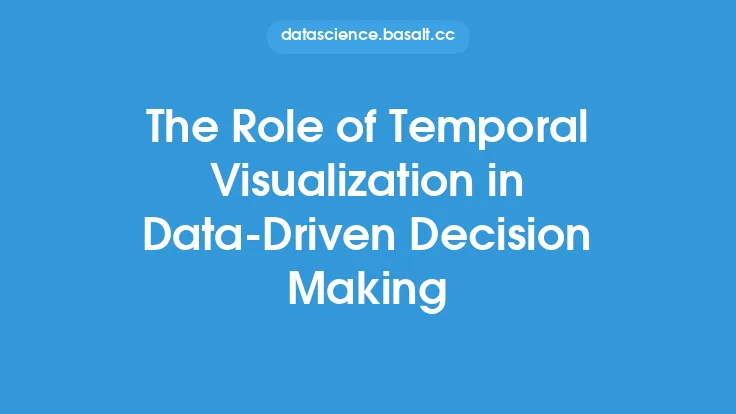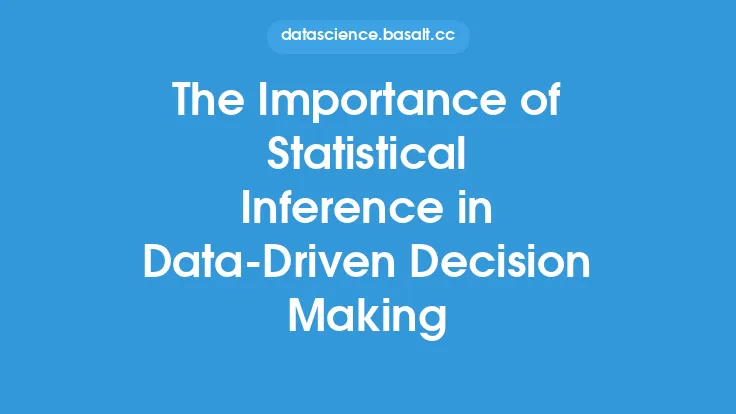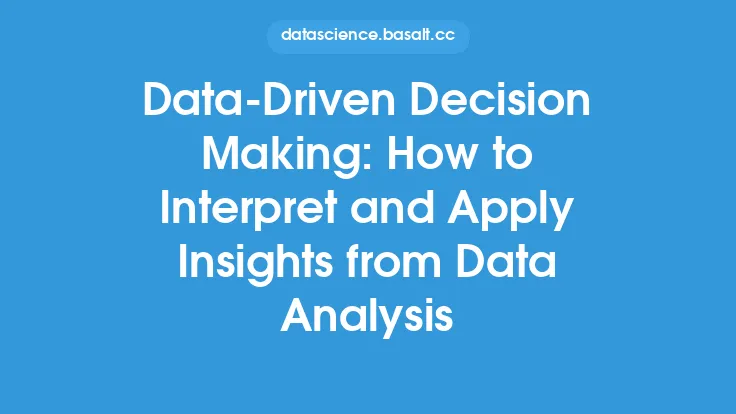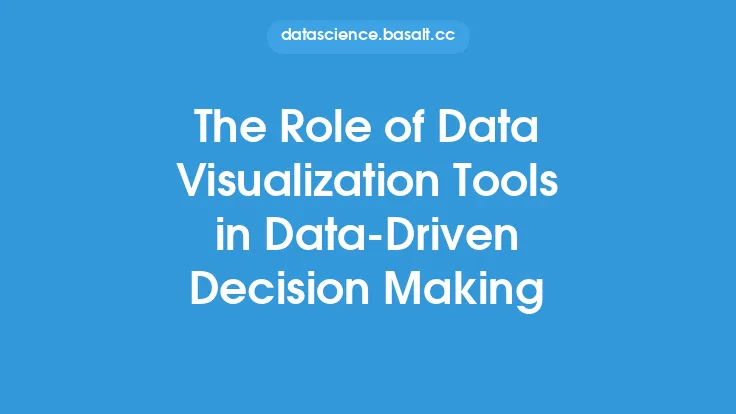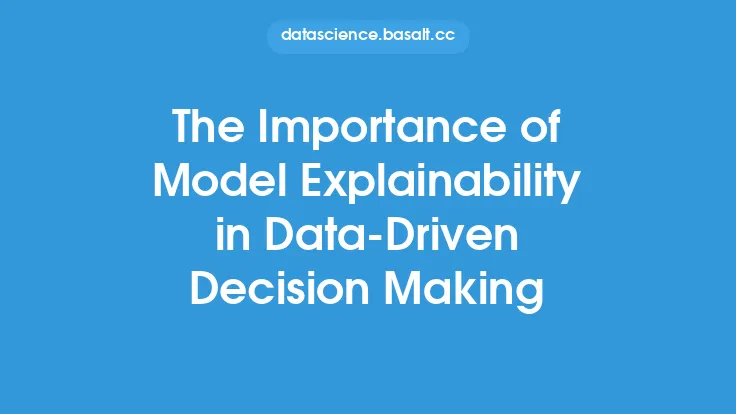In today's fast-paced, technology-driven world, organizations are constantly seeking ways to gain a competitive edge and make informed decisions. One key strategy that has emerged as a game-changer is data-driven decision making. This approach involves using data and analytics to inform and guide decision-making processes, rather than relying on intuition or anecdotal evidence. By leveraging data and analytics, organizations can unlock valuable insights, optimize operations, and drive business success.
Introduction to Data-Driven Decision Making
Data-driven decision making is a methodology that involves collecting, analyzing, and interpreting data to inform decision-making processes. This approach is based on the idea that data can provide a more accurate and objective understanding of a situation or problem, allowing organizations to make more informed decisions. Data-driven decision making involves a range of activities, including data collection, data analysis, and data interpretation. It also requires a range of skills and tools, including statistical analysis, data visualization, and data mining.
The Benefits of Data-Driven Decision Making
The benefits of data-driven decision making are numerous and well-documented. By using data and analytics to inform decision-making processes, organizations can gain a range of advantages, including improved accuracy, increased efficiency, and enhanced competitiveness. Data-driven decision making can also help organizations to identify new opportunities, optimize operations, and reduce risk. Additionally, data-driven decision making can help organizations to build a culture of evidence-based decision making, where decisions are based on facts and data rather than intuition or anecdotal evidence.
The Role of Data Analytics in Decision Making
Data analytics plays a critical role in data-driven decision making. Data analytics involves the use of statistical and computational methods to analyze and interpret data. This can include a range of techniques, such as regression analysis, predictive modeling, and data mining. Data analytics can help organizations to identify patterns and trends in data, make predictions about future events, and optimize business processes. By using data analytics, organizations can gain a deeper understanding of their customers, operations, and markets, and make more informed decisions as a result.
The Importance of Data Quality in Data-Driven Decision Making
Data quality is a critical factor in data-driven decision making. Poor-quality data can lead to inaccurate or misleading insights, which can in turn lead to poor decision making. Therefore, it is essential that organizations prioritize data quality and take steps to ensure that their data is accurate, complete, and consistent. This can involve a range of activities, such as data cleaning, data validation, and data normalization. By prioritizing data quality, organizations can ensure that their data is reliable and trustworthy, and that their decision-making processes are based on accurate and objective insights.
The Role of Technology in Data-Driven Decision Making
Technology plays a critical role in data-driven decision making. A range of technologies, such as business intelligence software, data visualization tools, and predictive analytics platforms, can help organizations to collect, analyze, and interpret data. These technologies can also help organizations to automate decision-making processes, identify new opportunities, and optimize operations. Additionally, technologies such as cloud computing, big data analytics, and the Internet of Things (IoT) can help organizations to collect and analyze large volumes of data, and gain new insights into their customers, operations, and markets.
Best Practices for Implementing Data-Driven Decision Making
Implementing data-driven decision making requires a range of best practices and strategies. These can include establishing a data-driven culture, prioritizing data quality, and investing in data analytics and technology. Organizations should also establish clear goals and objectives for their data-driven decision-making initiatives, and ensure that these goals are aligned with their overall business strategy. Additionally, organizations should prioritize transparency and accountability in their decision-making processes, and ensure that all stakeholders are informed and engaged throughout the decision-making process.
Overcoming Challenges and Barriers to Data-Driven Decision Making
Despite the many benefits of data-driven decision making, there are a range of challenges and barriers that organizations may face when implementing this approach. These can include cultural and organizational barriers, such as resistance to change or lack of skills and expertise. Technical barriers, such as poor data quality or inadequate technology, can also be a challenge. To overcome these challenges, organizations should prioritize education and training, invest in data analytics and technology, and establish clear goals and objectives for their data-driven decision-making initiatives. By doing so, organizations can unlock the full potential of data-driven decision making and achieve greater success and competitiveness in their markets.
The Future of Data-Driven Decision Making
The future of data-driven decision making is exciting and rapidly evolving. Advances in technologies such as artificial intelligence, machine learning, and the IoT are enabling organizations to collect and analyze larger volumes of data than ever before. These technologies are also enabling organizations to automate decision-making processes, identify new opportunities, and optimize operations in real-time. As data-driven decision making continues to evolve, organizations will need to prioritize agility, adaptability, and innovation in order to stay ahead of the curve. By doing so, they can unlock new insights, drive business success, and achieve greater competitiveness in their markets.
Conclusion
Data-driven decision making is a powerful approach that can help organizations to unlock valuable insights, optimize operations, and drive business success. By leveraging data and analytics, organizations can gain a deeper understanding of their customers, operations, and markets, and make more informed decisions as a result. While there are challenges and barriers to implementing data-driven decision making, these can be overcome with the right strategies, technologies, and skills. As the field of data-driven decision making continues to evolve, organizations will need to prioritize agility, adaptability, and innovation in order to stay ahead of the curve and achieve greater success and competitiveness in their markets.

